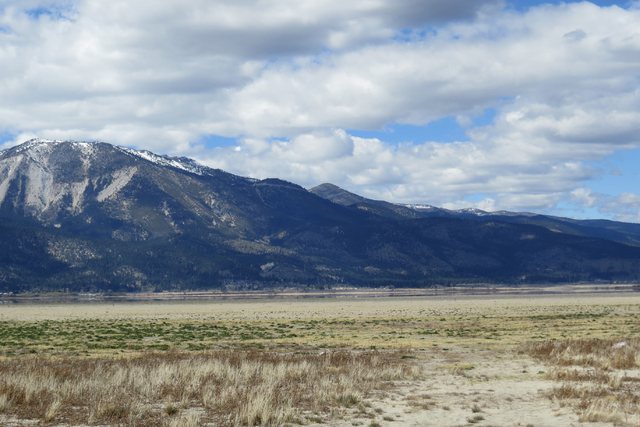Officials: Drought increases danger of Nevada wildfire

CARSON CITY — It is expected to be a long, dry and hot summer in Nevada, bringing with it the danger of wildland fires across much of the state in the midst of a fourth year of extreme drought.
Gov. Brian Sandoval was briefed on the potentially grim fire season Monday by state and federal and local fire officials.
“We can only prepare as much as we can not knowing what is going to happen,” Sandoval said as the briefing got under way.
Nevada has been fortunate to avoid losing much acreage to wildfire in the first three years of the current drought, with 59,252 acres burned in 2014 and 162,841 acres burned in 2013. By comparison, in 1999 nearly 1.9 million acres burned in Nevada.
But 2013 was significant for Southern Nevada, where firefighters battled the Carpenter 1 fire. Nearly 30,000 acres of the Mount Charleston area burned in that fire in July 2013.
The Mount Charleston area is identified as at high risk for fire again this year. Fire restrictions will take effect May 15.
Of the five Great Basin states, three – Nevada, Utah, and Oregon — are in 99 percent drought status, according to the U.S. Drought Monitor.
In a report to Sandoval, officials said: “Fuel, drought and weather conditions are lining up for a ‘perfect storm’ where multiple states could be having simultaneous fires, thus limiting availability of mutual aid resources.”
Over the past four years, Western Nevada missed as much as two years of precipitation, the report said, meaning levels were so low they were equivalent to having no precipitation at all. The winter of 2014-15 was also the warmest on record since 1895 for much of Nevada.
The result: “A historic snow drought.”
Nevada State Forester Bob Roper said firefighting requires a commitment from homeowners, as well.
“There are not enough government resources to protect everybody,” he said.
Sandoval said he’s confident that responders are ready. They have good equipment and there is a lot of collaboration, he said.
“We’re hopeful it’s not going to be a severe fire season, but if it is, we’re ready,” Sandoval said.
Wildland fires threaten not only homes and businesses, but could damage efforts to protect the greater sage grouse habitat found across 17 million acres of the state. Officials in the West are working to protect the bird to avoid a threatened or endangered listing by the U.S. Fish and Wildlife Service. The agency has a Sept. 30 deadline to decide whether to propose the greater sage grouse for federal protection.
Fire operations have become a large component of sage-grouse habitat preservation. Once wildfire burns sage-grouse habitat, invasive weeds such as cheatgrass often take over, crowding out native plants and sagebrush, which sage-grouse need to survive.
Sandoval’s briefing came on the same day Bureau of Land Management Director Neil Kornze received a similar briefing about preparations for the coming wildfire season at the National Interagency Fire Center in Boise.
Kornze and BLM Deputy Director Steve Ellis are holding a series of meetings with local officials and stakeholders in Nevada and Utah to discuss how to best collaborate and continue efforts to address drought.
“This fire season could be quite challenging, and we need to be coordinated and prepared,” Kornze said after his briefing.
Sandoval in April established the Nevada Drought Forum to craft a blueprint on best practices for water use and conservation. On Monday he signed a proclamation designating May as “Nevada Wildfire Awareness” month.
Contact Sean Whaley at swhaley@reviewjournal.com or 775-687-3900. Find him on Twitter: @seanw801.